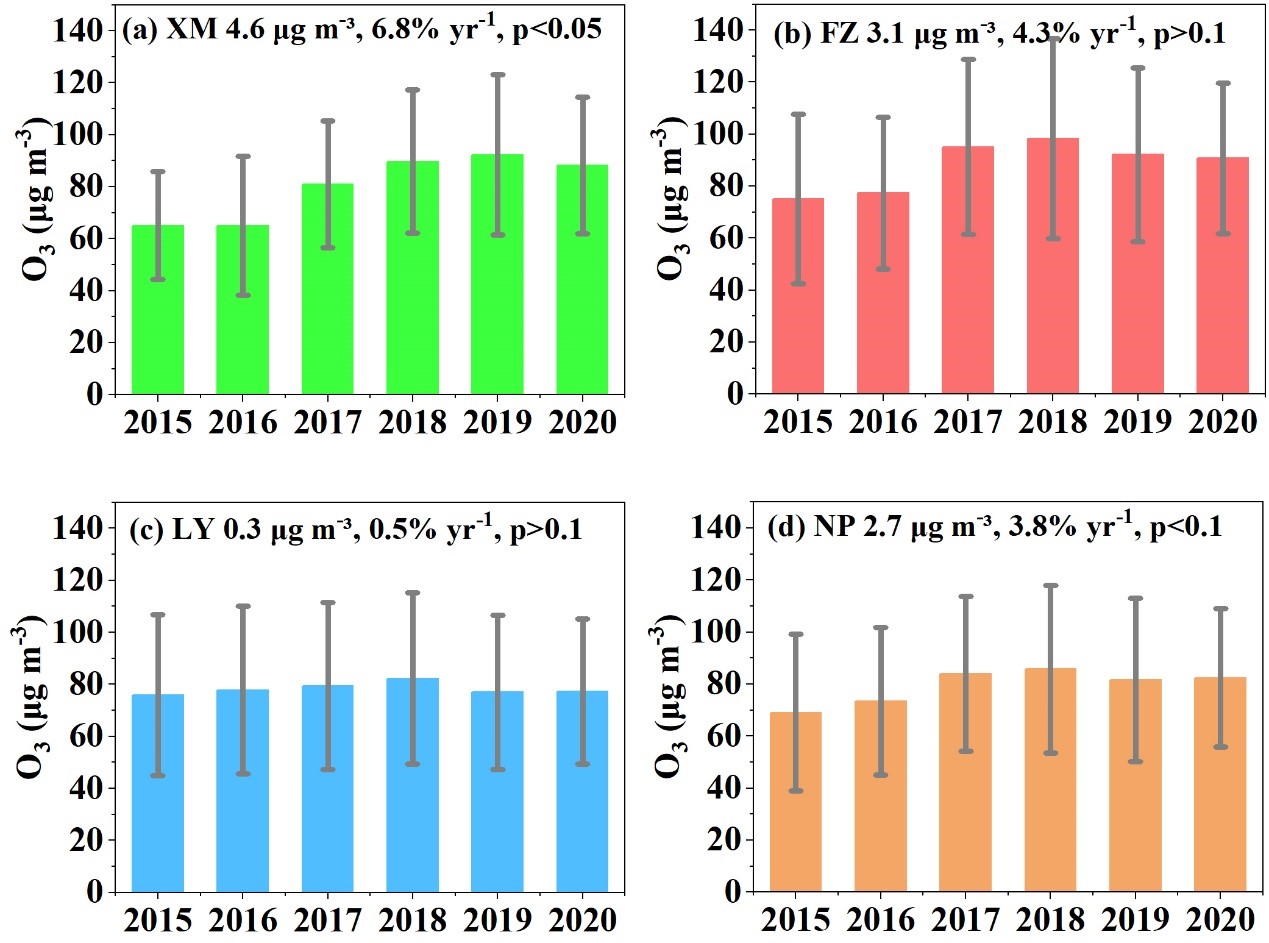

Surface ozone (O3) pollution under global climate change has become one of the top environmental issues. In this study, we focused on the coastal region in Southeast China with relatively low O3 precursor's emissions and complicated synoptic conditions, where the O3 trends and meteorological contributions remain unclear. An increasing trend of O3 concentrations in the cities (0.3-4.6 μg m-3 yr-1) from 2015 to 2020 was observed. Twenty-three synoptic patterns were clustered based on weather typing method, in which cyclone-related types and southwesterly type were generally associated with low O3 concentrations, and high O3 levels occurred with anticyclone-related types. Considering both frequency and intensity of synoptic patterns, reconstructed O3 series captured 46.0%-58.3% of the observed variability. Using Kolmogorov-Zurbenko filter, an increasing trend of long-term O3 was found. By implementing the multiple linear regression model between O3 concentrations and meteorological factors, the meteorological contributions to O3 variabilities (44.7%-66.1%) were quantified. The results indicated the meteorological conditions were particularly important in O3 pollution with the reductions of O3 precursor's emissions, among which relative humidity, boundary layer height, solar radiation along with low cloud cover were proved to play important roles. The weakening southwest winds along with more anti-cyclone systems under climate change could increase surface O3. This study elucidated the crucial meteorological drivers on the O3 variability in relatively clean areas and implied the challenges for local governments to mitigate O3 pollution under global climate change.
